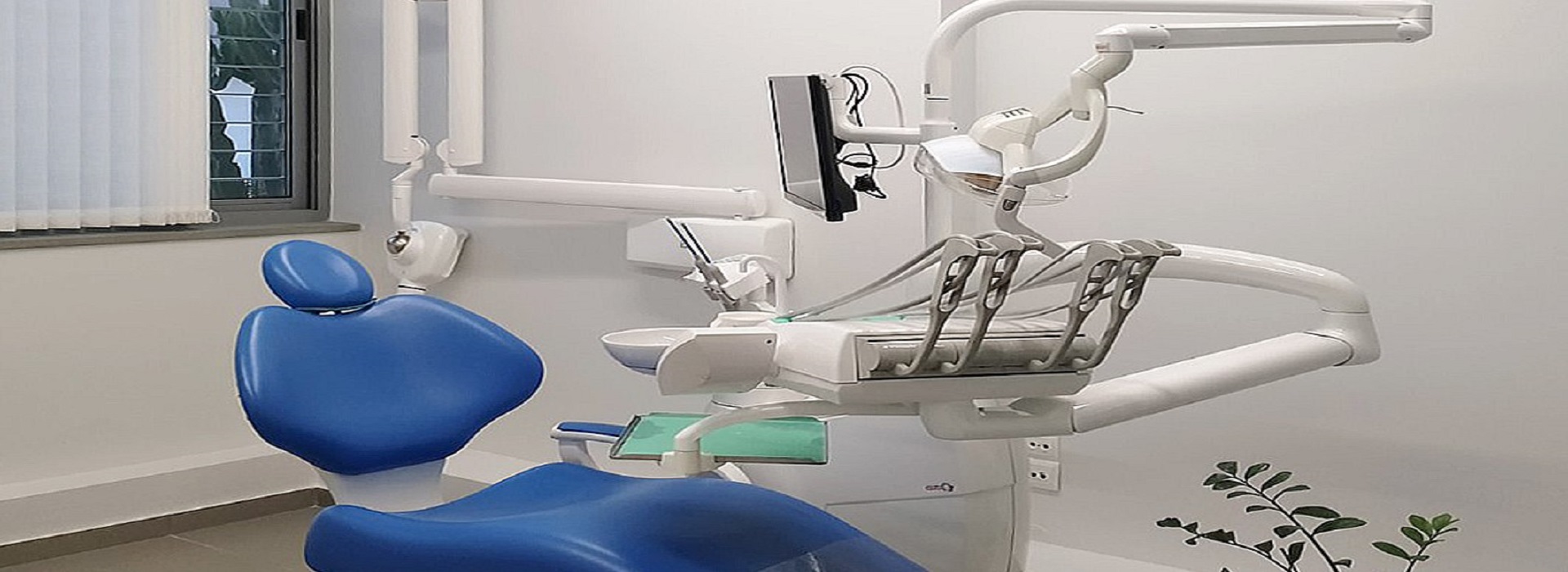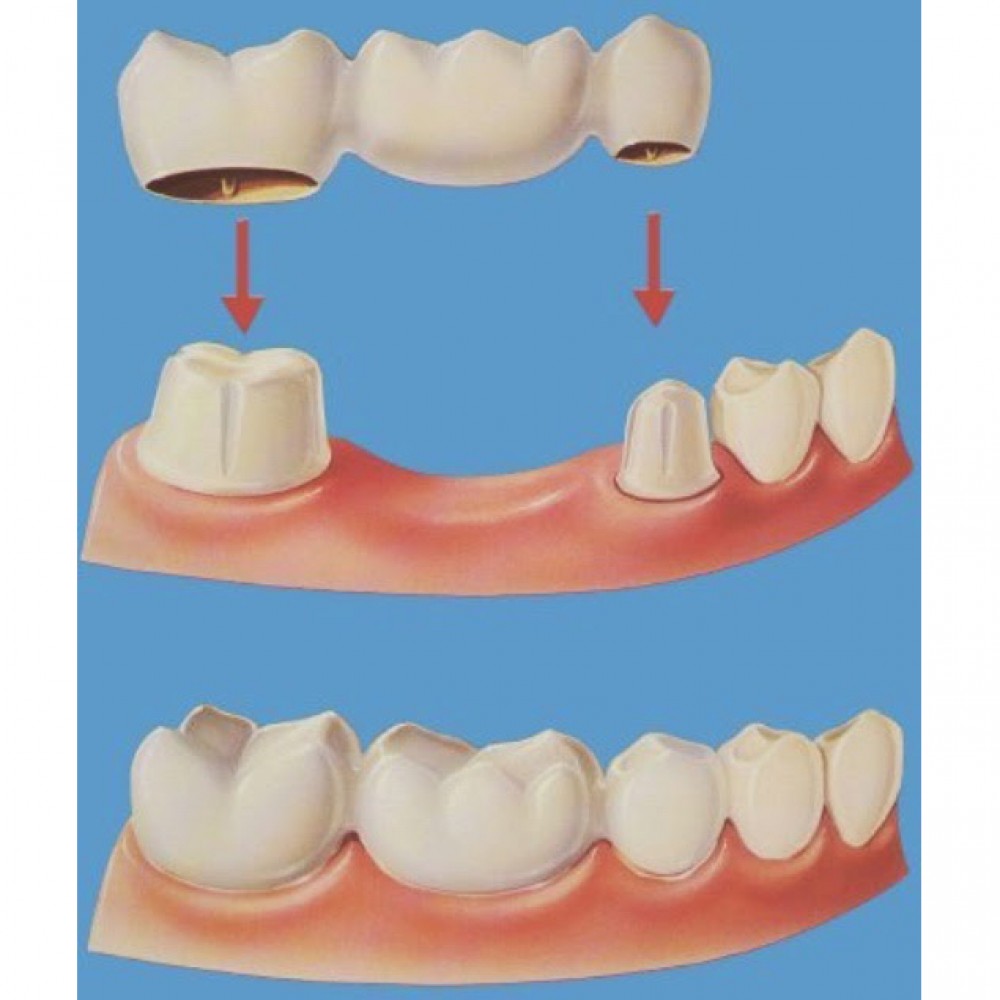Prosthetic work depends on the number of teeth we want to replace, but also on the needs of each patient. However, in modern dentistry, there are various techniques for replacing lost teeth. Some of these are the bridge, the partial or complete denture, the implantation e.t.c..
CROWNS (CAPS) AND BRIDGES
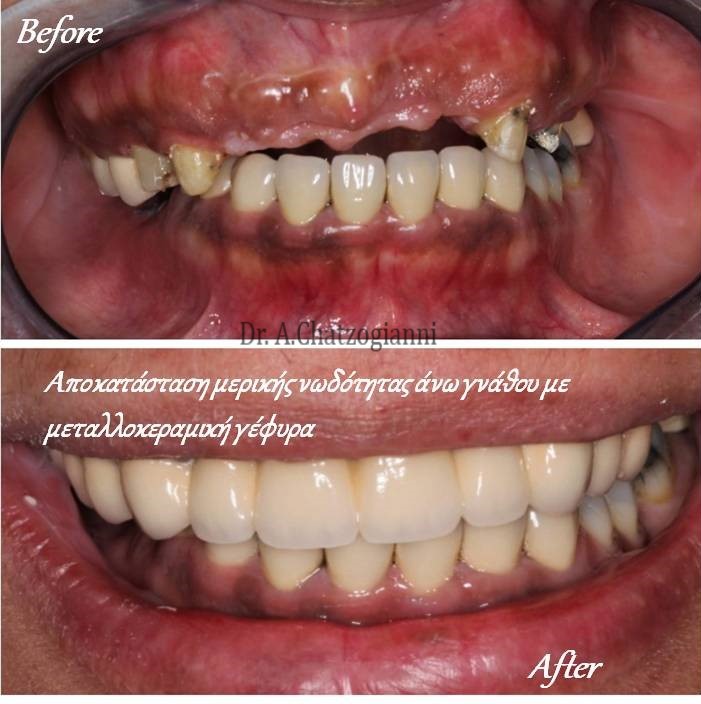 When the tooth is too damaged or may already have a large filling or is endodontically treated, it is placed in a cap so that it is not damaged more and can be protected. The tooth is circumferentially grinded and the crown, which can be either of metal-porcelain or all-ceramic or zirconium and is made in a dental laboratory, is placed above it.
When the tooth is too damaged or may already have a large filling or is endodontically treated, it is placed in a cap so that it is not damaged more and can be protected. The tooth is circumferentially grinded and the crown, which can be either of metal-porcelain or all-ceramic or zirconium and is made in a dental laboratory, is placed above it.
When this process is repeated in more teeth in a continuous order, then we are talking about a bridge. The disadvantage about bridges is that, in order to place the missing teeth, we have to grind at least two adjacent teeth. Nowadays, in modern dentistry, we prefer placing an implant in the place of a lost tooth, in order to avoid the grinding of the adjacent teeth. Toothed bridges are fixed prosthetic works, namely, they are permanently fixed in the mouth and do not come out.
The natural teeth on which the bridge is to be supported must be healthy, stable, and treated for any possible periodontal disease or gingivitis. Daily regular hygiene is very important in this case too.
The time of completion of the work is estimated at 2 to 3 sessions, depending on the patient’s needs.
PARTIAL DENTURE («BRIDGE»)
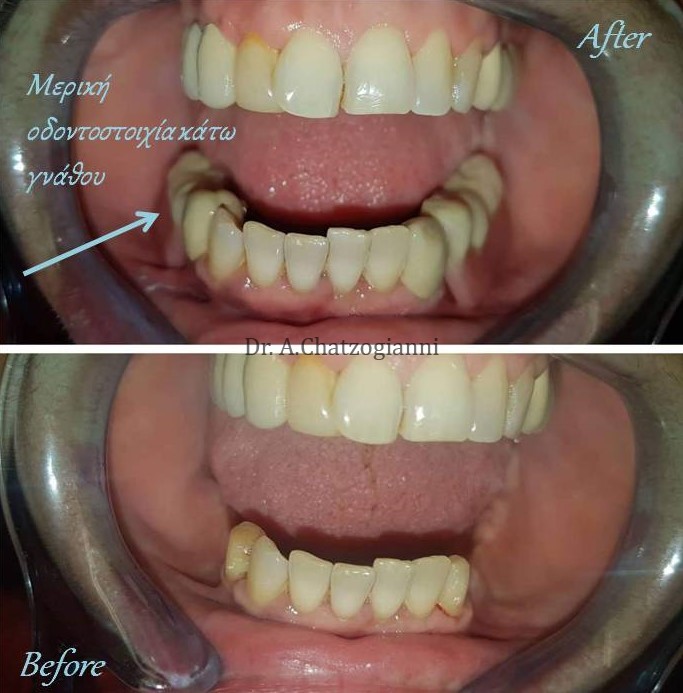 It is about a dental prosthetic work which replaces the missing teeth. It usually consists of a metal skeleton, where the missing teeth and gums are fixed, which are made of pink acrylic material. In order to hold, secure and connect with the natural teeth, fasteners, contactors or hooks are placed, as the case may be. In some cases, some of your natural teeth are covered with caps which serve as supports for the partial denture. It is a more economical solution, compared to the fixed prosthetic work (implant or bridge) but it is disadvantageous to the fact that it is a mobile construction. Usually, patients are easily adapted and used to the new data. Such a work takes about 3-4 weeks until it is complete, as it requires many tests. In case of tooth loss in the future, acrylic teeth are placed on the existing bridge. It is important to brush and to wash the denture on a daily basis (2 times a day).
It is about a dental prosthetic work which replaces the missing teeth. It usually consists of a metal skeleton, where the missing teeth and gums are fixed, which are made of pink acrylic material. In order to hold, secure and connect with the natural teeth, fasteners, contactors or hooks are placed, as the case may be. In some cases, some of your natural teeth are covered with caps which serve as supports for the partial denture. It is a more economical solution, compared to the fixed prosthetic work (implant or bridge) but it is disadvantageous to the fact that it is a mobile construction. Usually, patients are easily adapted and used to the new data. Such a work takes about 3-4 weeks until it is complete, as it requires many tests. In case of tooth loss in the future, acrylic teeth are placed on the existing bridge. It is important to brush and to wash the denture on a daily basis (2 times a day).
COMPLETE DENTURE (FALSE TEETH)
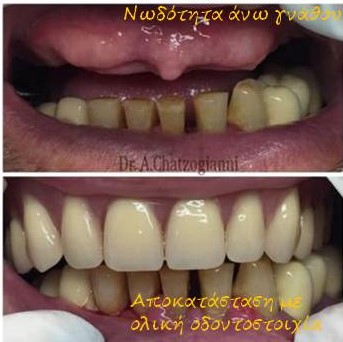 A total denture replaces all natural jawbone teeth which have been lost or removed. The base of the upper denture also covers the palate while the base of the lower denture has a petal shape, in order to facilitate the tongue, however, the result is very natural. The artificial complete dentures can be easily removed and repositioned in the patient's mouth.
A total denture replaces all natural jawbone teeth which have been lost or removed. The base of the upper denture also covers the palate while the base of the lower denture has a petal shape, in order to facilitate the tongue, however, the result is very natural. The artificial complete dentures can be easily removed and repositioned in the patient's mouth.
In cases where there is a lack of bone holding, it is possible to place dental implants in the jaw, whereupon the denture closes with special clamps. Then we are talking about the so-called implant-supported denture.
Generally, it takes a little time for the patient to get used to the prosthetic work, as a little practice is required until they get used to eating and talking with them. As with the partial dentures, it is important to systematically brush the dentures daily. When the patient is not wearing them (especially when they are asleep), it is good to keep them in water, so they do not dry out.
Artificial dentures must be checked by the dentist at least once a year, because they are damaged and may need to be repaired or replaced.
For more information click the links:
https://www.chatzogianni.gr/gr/prosthetiki-album

